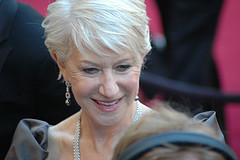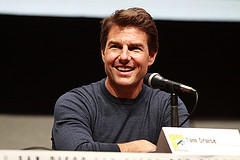Share This Article:
Return to Silver Screen Central Home page


Helen Mirren shows her tough side in Eye in the Sky
B+Alfred Hitchcock based many of his best scenes on the principle that suspense results from the audience knowing that something bad is about to happen when the characters don’t. Director Gavin Hood applies that principle to 21st century warfare in his powerful thriller Eye in the Sky, a film that raises moral and political issues at the same time as it keeps the audience on the edge of their seats.
Eye in the Sky takes place in near real time, as a joint British-U.S. task force tracking a Kenyan terrorist safe house discovers that two suicide bombers inside the house are arming themselves for an attack that could kill dozens of civilians. However, before Col. Powell (Helen Mirren), the commanding officer, can launch a drone strike against the terrorists, Lt. Watts, the American drone pilot (Aaron Paul) spots a little girl selling bread outside the house. Realizing that the missile explosion will likely kill the girl as well, the various government officials in charge of the mission debate whether to proceed with the attack.
The issue in Eye in the Sky is simple—how much collateral damage is acceptable to stop a terrorist attack; its resolution is not. As one government official puts it, “If they kill 80 people, we win the propaganda war. If we kill one child, they do.” But director Hood isn’t just out to explore moral issues here; he’s also constructed a cracker jack thriller, one that ironically is effective because of the separation, both physical and psychological, between the decision makers and the child whose life is at risk. As those in charge ponder possible alternatives that might save the girl’s life, the time in which they can stop the terrorists dwindles. Hood creates a surreal, antiseptic setting, as the various military personnel and government officials sit in safety thousands of miles away, watching through the “eye in the sky,” cameras that show exactly what’s happening at the safe house. Contrasting scenes capture the chaos on the street outside the house where an undercover intelligence operative (Barkhad Abdi) dodges armed militia so he can provide updates. Superb acting magnifies the tension even further. Helen Mirren shows the same gritty determination she displayed two decades ago in her Prime Suspect roles, while the late Alan Rickman, in his last onscreen appearance, is perfectly cast as Powell’s sardonic superior, desperately trying to cajole the officials into making a decision. The ending of Eye in the Sky adds one needless complication that diminishes its emotional impact somewhat, but, nonetheless, the movie squarely strikes both its ethical and entertainment targets.
Continue reading on Eye in the Sky: Mini-review




Recent Comments